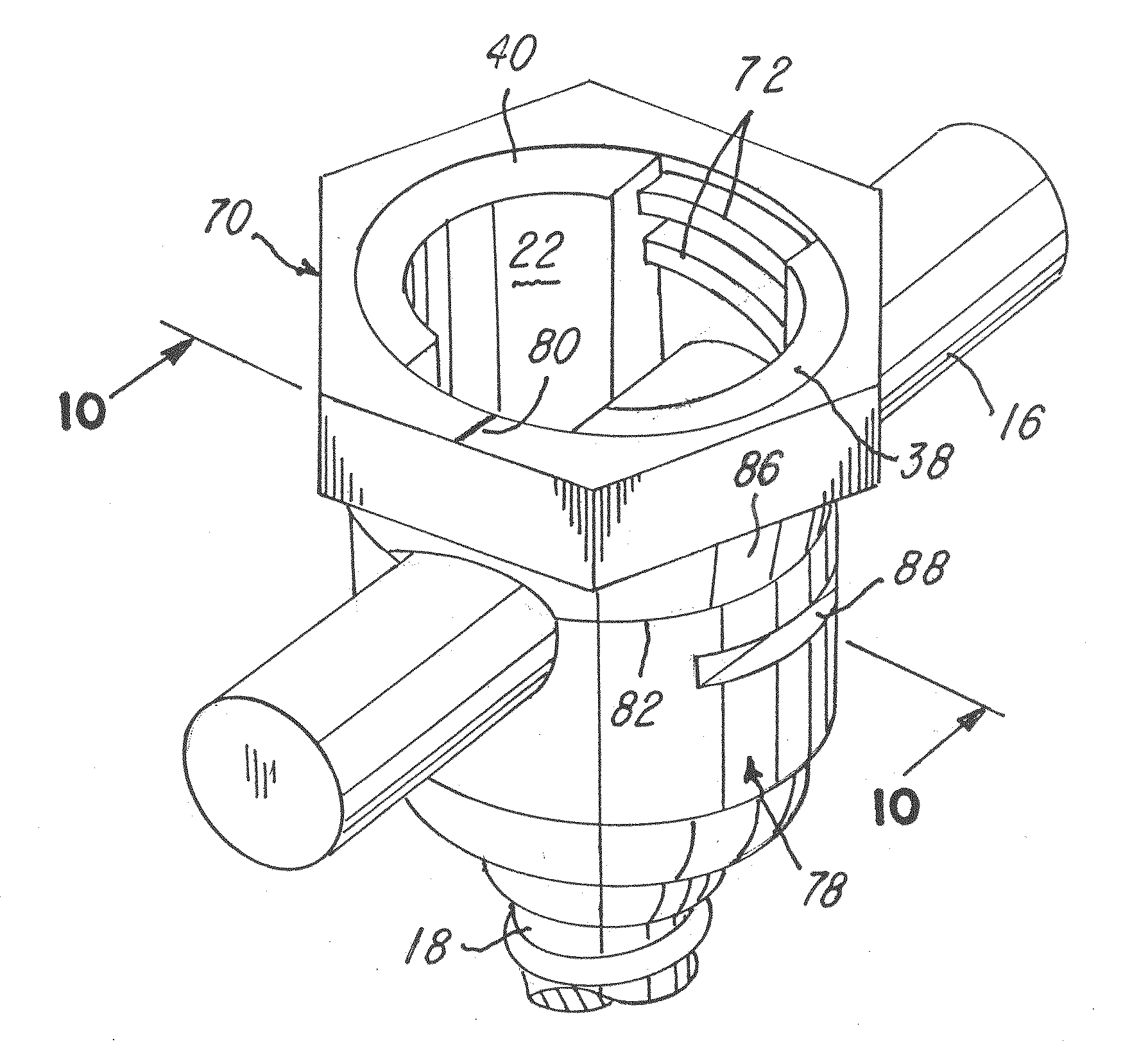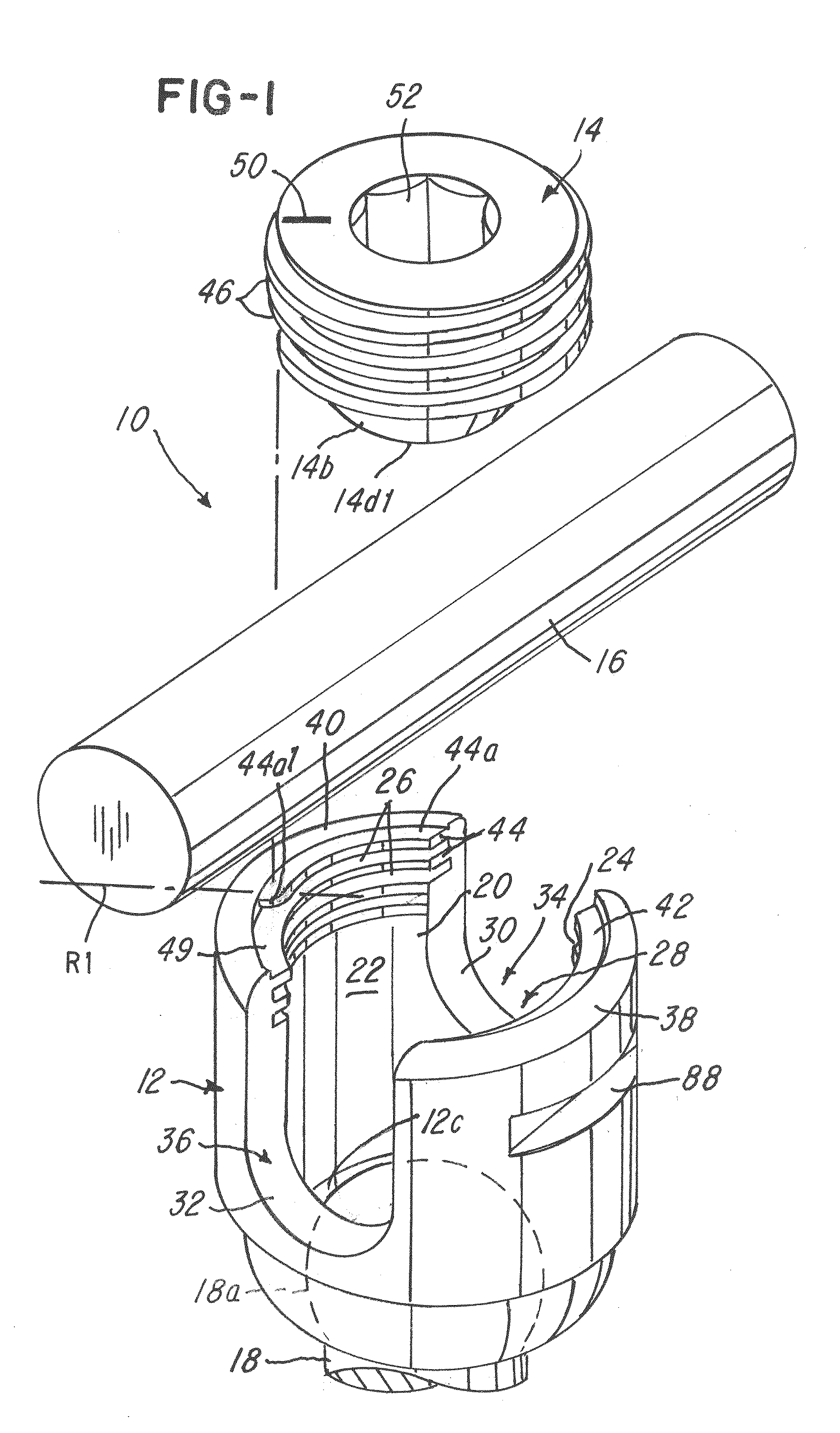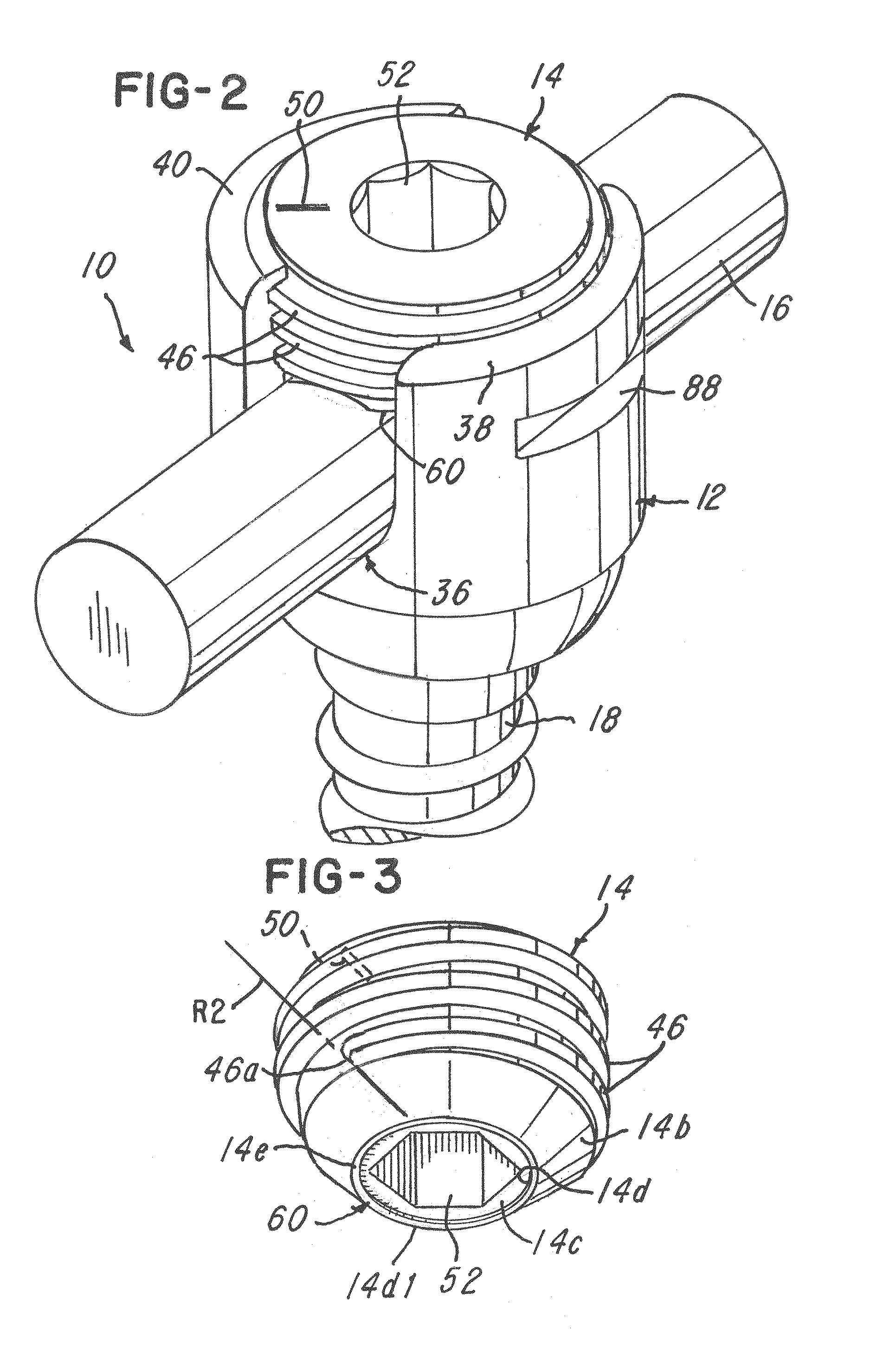Spinal implant locking member with improved guidance, tactile and visual feedback
a technology of pinal implants and locking members, applied in the field of pinal implants having and a lock aid, can solve the problems of cap difficulty in engaging in the tulip or receiver, cross thread failure upon initial thread engagement, and exacerbated problems
- Summary
- Abstract
- Description
- Claims
- Application Information
AI Technical Summary
Benefits of technology
Problems solved by technology
Method used
Image
Examples
Embodiment Construction
[0034]Referring now to FIGS. 1-10, an implant, polyaxial screw, system and method 10 are shown. In a first illustrative embodiment, the system 10 comprises a receiver 12 and a cap 14 which is threadably mounted on the tulip or receiver 12. The receiver 12 receives the cap 14 after a rod 16 and a polyaxial screw 18 are received in the receiver 12 in a manner conventionally known and as shown in FIG. 1.
[0035]The receiver 12 comprises at least one internal wall 20 defining a bore 22. At least a portion of the receiver 12 comprises a plurality of female threads, such as threads 24 and 26. In this regard, note that the receiver 12 comprises a rod-receiving channel 28. The receiver 12 comprises a first generally U-shaped wall 30 that defines a first rod-receiving opening 34 and a generally opposed second generally U-shaped wall 32 that defines a second rod-receiving opening 36 as shown. The first and second rod-receiving openings 34 and 36 cooperate to define the rod-receiving channel 28 ...
PUM
 Login to View More
Login to View More Abstract
Description
Claims
Application Information
 Login to View More
Login to View More - R&D
- Intellectual Property
- Life Sciences
- Materials
- Tech Scout
- Unparalleled Data Quality
- Higher Quality Content
- 60% Fewer Hallucinations
Browse by: Latest US Patents, China's latest patents, Technical Efficacy Thesaurus, Application Domain, Technology Topic, Popular Technical Reports.
© 2025 PatSnap. All rights reserved.Legal|Privacy policy|Modern Slavery Act Transparency Statement|Sitemap|About US| Contact US: help@patsnap.com



